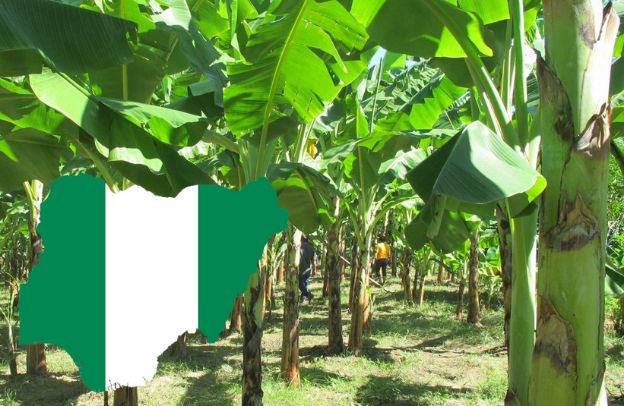Feeding Africa: The Power of Maize-Based Livestock Feed in Agribusiness

In Africa, maize has long been a staple crop, essential to both human consumption and economic stability. Yet, beyond its role in daily meals, maize holds untapped potential to revolutionize livestock farming across the continent. As demand for meat, dairy, and poultry products grows, so does the need for efficient, cost-effective feed solutions.
Want to learn more about storytelling? Start by downloading the first chapter of The Storytelling Mastery.
This is where maize-based livestock feed emerges as a game-changer—boosting productivity, supporting local economies, and offering a sustainable path to address food security challenges. In this article, we explore how maize is not only feeding Africa’s population but fueling its agricultural future.
Get Ready to Tap into African Agribusiness Potentials
As a member of the African diaspora, you carry with you not just the dreams of your ancestors but also the tools to cultivate a thriving agribusiness that can help feed millions and create sustainable opportunities within your community.
The key lies in harnessing the power of maize, a crop that has nourished generations and holds the promise of a prosperous future for the African continent.
As the world grapples with food security issues, Africa stands out with its vast agricultural potential. According to the Food and Agriculture Organization (FAO), Africa has the capacity to feed itself and the rest of the world, thanks to its abundance of arable land and favorable climate conditions.
See also Cultivating Resilience: Innovations in Disaster-Proofing Crops
Yet, with an increasing population projected to reach 2.4 billion by 2050, the urgency to leverage agriculture as a vehicle for economic growth and food security has never been greater.
This presents a unique opportunity for you, as a member of the African diaspora, to invest in agribusiness that not only fulfills market demands but also fosters collaboration and shared success across the global African community.
Understanding Africa’s Agricultural Landscape
Africa’s agricultural sector is in a state of transformation. Recent data shows that agriculture accounts for about 15% of Africa’s GDP, employing over 60% of the continent’s workforce.
However, despite its potential, the continent still faces challenges such as inadequate infrastructure, limited access to financing, and reliance on imported feed for livestock. This is where you come in.
By tapping into the immense potential of maize-based livestock feed, you can make a significant impact. Maize is not just a staple crop; it is a versatile ingredient that provides essential energy and protein to livestock.
According to the International Livestock Research Institute (ILRI), maize accounts for approximately 45% of animal feed in sub-Saharan Africa. This reliance on maize makes it an ideal focus for your agribusiness venture.
See also Innovation in Agriculture: Showcasing Technological Advancements Through Storytelling
By producing your own maize-based feed, you can ensure that livestock receive the necessary nutrients while simultaneously reducing costs and promoting self-sufficiency. More importantly, by collaborating with other diaspora entrepreneurs, you can create a robust network that supports and uplifts each other in the agribusiness sector.
The Nutritional Needs of Livestock
Before diving into the specifics of maize-based feed production, it’s essential to understand the nutritional needs of livestock. Proper nutrition is critical for the health and productivity of animals. Livestock requires a balanced diet rich in:
- Energy,
- Protein,
- Vitamins,
- And Minerals To Grow, Reproduce, and Maintain Overall Health.
Maize stands out as a cost-effective feed ingredient, with high energy content and protein levels. The versatility of maize allows it to be incorporated into various feed formulations, enabling you to cater to the specific nutritional needs of different livestock types, whether it’s cattle, goats, or poultry.
By creating your own maize-based feed, you can control the quality of ingredients and tailor the nutrition according to the unique requirements of your livestock. This control not only promotes animal health but also enhances productivity, leading to increased profits for your agribusiness.
Africa Livestock Potential
Africa’s livestock sector holds immense potential as a critical driver of economic growth, food security, and rural development. In 2022, the continent’s chicken population reached an impressive 2.4 billion, underscoring its central role in meeting Africa’s protein needs.
Goats and sheep followed, with 506 million and 419 million heads respectively, reflecting their importance in diverse agro-ecological systems, particularly in arid and semi-arid regions.
Cattle, numbering 382 million, remain vital not only for meat and dairy production but also for draft power in farming communities. These figures highlight the massive scale of livestock production in Africa, but they also point to untapped potential.
With better data collection, infrastructure investment, and policy support, Africa’s livestock sector could become a cornerstone of economic resilience, addressing both domestic food demands and increasing export opportunities.
However, the challenge lies in the continent’s data gaps. According to the African Union Inter-African Bureau for Animal Resources (AU-IBAR), there is a critical need for comprehensive, accurate livestock data to guide policy and investment.
Recent efforts, such as Uganda’s initiative to simplify livestock data collection systems, and the Tanzania National Panel Survey’s work on improving agricultural data, are steps in the right direction.
See also Harvesting Engagement in your Agribusiness: How Storytelling Can Cultivate True Connections
These projects aim to address the shortcomings in statistical monitoring, enabling stakeholders to make informed decisions and unlock the sector’s full potential. With improved data, policymakers can better assess market needs, and direct investments, and optimize the sector’s contributions to both national economies and household livelihoods.
Materials and Equipment for Maize-Based Feed Production
To embark on your journey of producing maize-based feed, you’ll need some basic materials and equipment. Here’s what you’ll need:
- Maize: The primary ingredient. You can grow your own maize or purchase it from local suppliers.
- Grinder or Mill: Essential for grinding the maize into a fine or coarse powder. You can choose between manual or electric options, depending on your budget and scale of operation.
- Mixing Container: A plastic or metal container with a lid to mix the ground maize with other feed ingredients.
- Optional Ingredients: To enhance the nutritional value, consider adding protein sources (like soybean meal or fish meal), vitamins, and minerals.
Having the right materials and equipment is crucial for producing high-quality feed that supports livestock health.
However, the true power lies in collaboration. By joining forces with fellow entrepreneurs in the diaspora, you can share resources, knowledge, and best practices to enhance your feed production efforts.
Preparing the Maize: Steps to Success
Before you can produce maize-based feed, proper preparation of the maize is vital. This process includes cleaning and drying the maize to ensure its safety and quality.
Cleaning: Begin by removing any debris from the maize.
This step is crucial as contaminants can harm livestock health. You can clean maize manually or use a cleaner for larger batches.
Drying: Once cleaned, the maize needs to be dried to reduce moisture content, preventing mold and deterioration. Spread the maize in a warm, well-ventilated area like a barn or greenhouse, or use a dehydrator. Aim for a moisture content of around 14% for optimal storage conditions.
By taking these steps, you can ensure that the feed you produce is safe and of high quality, which is paramount for livestock health and productivity.
Grinding and Mixing: Crafting Quality Feed
Once your maize is cleaned and dried, the next step is grinding and mixing.
- Grinding: Use a grinder or mill to convert the dried maize into a fine or coarse powder, depending on the livestock type. For instance, fine powders may be more suitable for poultry, while coarser mixes can benefit larger livestock.
- Mixing: After grinding, it’s time to combine the maize with other feed ingredients. This may include protein sources, vitamins, and minerals. The goal is to create a balanced feed that meets the nutritional needs of your livestock. Whether you choose to mix by hand or use a machine, ensure that the ingredients are well-combined for consistency.
- Storage: Store the prepared feed in airtight containers in a cool, dry place to maintain its quality. Proper storage protects the feed from moisture, pests, and spoilage, ensuring that your livestock receive the best possible nutrition.
As you refine your feed production process, consider documenting your journey. Sharing your experiences through social media or blogs can serve as powerful storytelling tools that resonate with your audience.
See also Leveraging Heritage Storytelling for Agribusiness Branding
By highlighting the challenges and successes of your venture, you can inspire other diaspora entrepreneurs to join you in the agribusiness arena.
Implementing a Feeding Strategy
Now that you have prepared your maize-based feed, it’s time to introduce it to your livestock’s diet.
- Gradual Introduction: Start by mixing a small amount of the new feed with the old feed. This gradual introduction helps livestock adjust to the new diet, preventing digestive issues. Over several days or weeks, gradually increase the proportion of the new feed.
- Monitoring Health: Keep a close eye on your livestock’s health during this transition. Look for signs of improved appetite, weight gain, and overall vitality. If any issues arise, such as decreased appetite or digestive problems, consider adjusting the feed composition or consulting a veterinarian.
- Feeding Schedule: Establish a regular feeding schedule to create a routine for your livestock. Consistency helps animals adapt to their diets and allows you to monitor their health effectively.
The Benefits of Making Your Own Maize-Based Feed
Producing your own maize-based feed offers numerous advantages. Firstly, it can lead to significant cost savings, as you can grow your maize or buy it in bulk at a lower price compared to commercial feed.
Furthermore, you gain control over the ingredients, ensuring that your livestock receive the best nutrition tailored to their needs. This autonomy fosters a sense of self-sufficiency, allowing you to break free from dependence on commercial feed suppliers.
Additionally, making your own feed reduces the environmental impact associated with transporting and packaging commercial feed. By investing in local production, you contribute to sustainability and create opportunities for collaboration within the diaspora community.
Through partnerships with fellow entrepreneurs, you can explore shared resources for feed production, fostering a sense of unity and collective growth within the African diaspora.
See also Unlocking Africa’s Agricultural Potential: Opportunities for Western Investors
Imagine working together with a network of passionate individuals, pooling knowledge, resources, and ideas to create a more sustainable agribusiness ecosystem.
The Role of Proper Nutrition and Monitoring
Proper nutrition is the cornerstone of successful livestock farming. Without adequate nutrition, livestock can become weak, sickly, and unproductive. By ensuring that your animals receive the right nutrients through your maize-based feed, you can enhance their health and productivity.
Moreover, regular monitoring is essential. Observe your animals’ appetite, weight, and overall condition. If you notice any signs of distress or poor health, address the issue promptly. Quick adjustments to their diet or veterinary care can prevent further complications.
Monitoring also helps to prevent diseases and illnesses, which can be costly in terms of treatment and lost productivity. By prioritizing proper nutrition and vigilant monitoring, you can cultivate a thriving livestock operation that benefits both your business and your community.
Conclusion: A Call to Action
As you embark on your journey of producing maize-based livestock feed, remember that you are part of a larger narrative—one that encompasses the dreams and aspirations of the African diaspora.
By leveraging the potential of maize and collaborating with fellow entrepreneurs, you can create a robust agribusiness that not only feeds Africa but also empowers communities.
Your story can inspire others to take action and explore agribusiness opportunities within the diaspora. Consider sharing your journey through social media, community events, or entrepreneurial networks. As you document your successes and challenges, you become a beacon of hope and inspiration for others looking to make their mark in the agribusiness sector.
Want to learn more about storytelling? Start by downloading the first chapter of The Storytelling Mastery.





